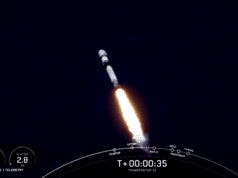
US: In order to test and measure Earth’s radiation imbalance to see if at all it is responsible for global warming and climate change, a CubeSat was launched into low-Earth orbit in November 2016. Data gathered by the satellite – Radiometer Assessment using Vertically Aligned Nanotubes (RAVAN) CubeSat, has revealed that the radiation is contributing less than one percent in this scheme of things.
Designed to measure the amount of reflected solar and thermal energy that is emitted into space, RAVAN employs two technologies that have never before been used on an orbiting spacecraft: carbon nanotubes that absorb outbound radiation and a gallium phase change blackbody for calibration.
Among the blackest known materials, carbon nanotubes absorb virtually all energy across the electromagnetic spectrum. Their absorptive property makes them well suited for accurately measuring the amount of energy reflected and emitted from Earth. Gallium is a metal that melts – or changes phase – at around body temperature, making it a consistent reference point. RAVAN’s radiometers measure the amount of energy absorbed by the carbon nanotubes, and the gallium phase change cells monitor the stability of the radiometers.
RAVAN began collecting and sending radiation data on Jan. 25 and has now been in operation for well past its original six-month mission time frame.
Instruments for measuring Earth‘s outgoing energy are currently housed aboard a few large satellites, and while they have a high spatial resolution they cannot observe the entire planet simultaneously the way a constellation of RAVAN CubeSats could, explained Bill Swartz, Principal Investigator of Johns Hopkins Applied Physics Laboratory in Laurel, Maryland.
He and his team are now monitoring RAVAN in the longer term to see how much the instrument changes over time and are also performing data analysis and comparing its measurements with existing model simulations of outgoing Earth radiation.
“We know that outgoing radiation from Earth varies widely over time depending on variables such as clouds or aerosols or temperature changes,” Swartz said. “A constellation can provide a global, 24/7 coverage that would improve these measurements.”
RAVAN and other Earth science CubeSat missions are funded and managed by NASA‘s Earth Science Technology Office (ESTO) in the Earth Science Division. ESTO supports technologists at NASA centers, industry and academia to develop and refine new methods for observing Earth from space, from information systems to new components and instruments.
Small satellites, including CubeSats, are playing an increasingly larger role in exploration, technology demonstration, scientific research and educational investigations at NASA, including: planetary space exploration; Earth observations; fundamental Earth and space science; and developing precursor science instruments like cutting-edge laser communications, satellite-to-satellite communications and autonomous movement capabilities.




